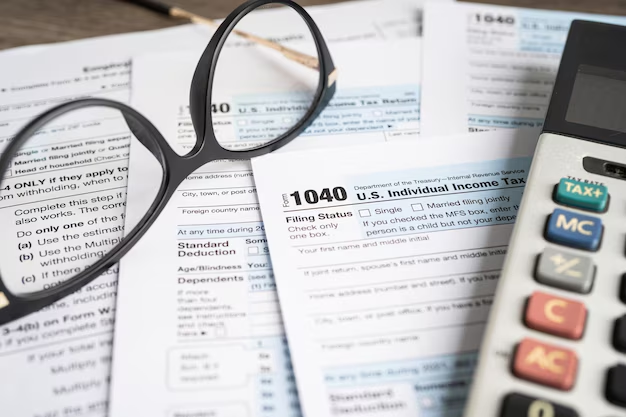Navigating the 1040 Form: How to Find it and Make it Work for You
Tax season can feel overwhelming, but understanding and finding the right forms can simplify the process. The 1040 Form is a cornerstone of filing federal income tax returns in the United States, acting as your gateway to proper tax reporting and potential refunds. Whether you're a seasoned taxpayer or new to the game, discovering how to locate and correctly use the 1040 Form doesn't have to be a daunting task.
Understanding the 1040 Form
Before diving into where and how to find the 1040 Form, let's explore what it is and why it's essential. The 1040 Form is the official document used to report various types of income to the Internal Revenue Service (IRS). It helps taxpayers calculate their taxable income and figure out the correct amount of taxes they owe—or the refund they expect.
Key Features of the 1040 Form
- Income Reporting: From wages to interest, dividends, and more, the 1040 Form captures a complete picture of your annual earnings.
- Deductions and Credits: This form allows you to claim various deductions and credits, potentially lowering your taxable income.
- Refund and Payment System: At its core, the 1040 Form determines whether you will receive a refund or need to make additional tax payments.
Knowing these attributes helps you understand why the 1040 is indispensable during tax season.
Where to Find the 1040 Form
Finding the 1040 Form isn't as challenging as you might think. With the digital era, access to essential tax forms has vastly improved, offering numerous ways to obtain what you need.
Online Resources
IRS Website: The most direct source is the IRS's official website, where you can easily download the 1040 Form. It's critical to ensure you're getting the most current version, as tax laws can change annually.
Tax Software Programs: Many tax preparation software provides electronic versions of the 1040 Form as part of their service. These platforms often guide users through the form completion process, making it user-friendly.
Physical Locations
- Local Libraries: During tax season, libraries often carry paper copies of tax forms, including the 1040.
- Post Offices: Sometimes post offices have limited forms available upon request during tax season.
Professional Assistance
- Tax Preparers: Professionals who prepare taxes can provide and help fill out the 1040 Form, ensuring it is done correctly.
- Volunteer Programs: The IRS's VITA (Volunteer Income Tax Assistance) programs offer free tax help to those who qualify, often supplying necessary forms.
Tips for Using the 1040 Form
Once you have the form, correctly filling it out is paramount. Attention to detail can save you from errors and delays.
Properly Filling Out Your 1040 Form
1. Gather Necessary Information
- Personal Information: Have your Social Security Number and other personal identification ready.
- Income Documentation: Collect all W-2s and 1099s, along with any other income-related documents.
2. Understand Deductions and Credits
- Standard vs. Itemized Deductions: Decide whether to take the standard deduction or itemize deductions. Itemizing could be beneficial if your deductible expenses exceed the standard deduction.
- Tax Credits: Certain credits, like the Earned Income Tax Credit, can significantly impact your tax outcome.
3. Follow Instructions Carefully
- Each section of the 1040 Form comes with specific instructions. Taking the time to read and follow them can prevent cause of errors.
Common Pitfalls to Avoid
Even seasoned filers can make mistakes. Awareness of common pitfalls can keep your tax filing smooth:
- Math Errors: Always double-check calculations to avoid overpayment or underpayment.
- Incorrect Details: Ensure personal information, such as your Social Security Number, is correct.
- Missing Signatures: An unsigned form is considered incomplete, which can delay processing.
Visual Summary: Key Steps to Finding and Using the 1040 Form
Here's a quick overview to help keep you on track during tax season:
🟢 How to Access the 1040 Form:
- Visit the IRS website for the most current version.
- Use tax software for guided, electronic completion.
- Check local libraries or post offices for paper copies.
- Consult with tax professionals or volunteer services.
🖊️ Filling Out the 1040 Form:
- Collect Documents: Gather all W-2s, 1099s, and other income documents.
- Choose Deductions Wisely: Determine if standard or itemized deductions are right for you.
- Read Instructions: Follow the 1040's instructions carefully to avoid errors.
- Double-Check: Review personal details and calculations before submission.
🚫 Common Mistakes:
- Misplaced math causing incorrect tax amounts.
- Incorrect or missing information leading to form rejection.
- Forgetting to sign the form, delaying your tax process.
Additional Insights on the 1040 Form
Choosing the Right Version
While the classic 1040 is the most common version, various iterations exist, such as the 1040-SR for seniors and 1040-NR for nonresident aliens. Selecting the right version ensures compliance and accuracy.
Life Changes and Their Impact on Filing
Major life events (e.g., marriage, having a child, job changes) can alter your tax situation, impacting deductions, credits, and overall tax liability. Considering these changes when filling out your 1040 can lead to more favorable tax outcomes.
Modern Trends in Tax Filing
The shift towards digital filing is prominent. Many individuals find online filing to be faster and more efficient, taking advantage of electronic submission through the IRS's e-file system. This trend is particularly beneficial with direct deposit refunds, offering quicker access to funds.
Taking Charge of Your Tax Filing Journey
Navigating tax obligations doesn't have to be daunting. Armed with the right information and resources, taxpayers can confidently manage their duties, maximizing benefits the tax system offers. By understanding the significance of the 1040 Form, knowing where to find it, and how to use it effectively, you empower yourself to face tax season with assurance and clarity. Embrace this structured approach to secure your financial obligations and potential returns.
